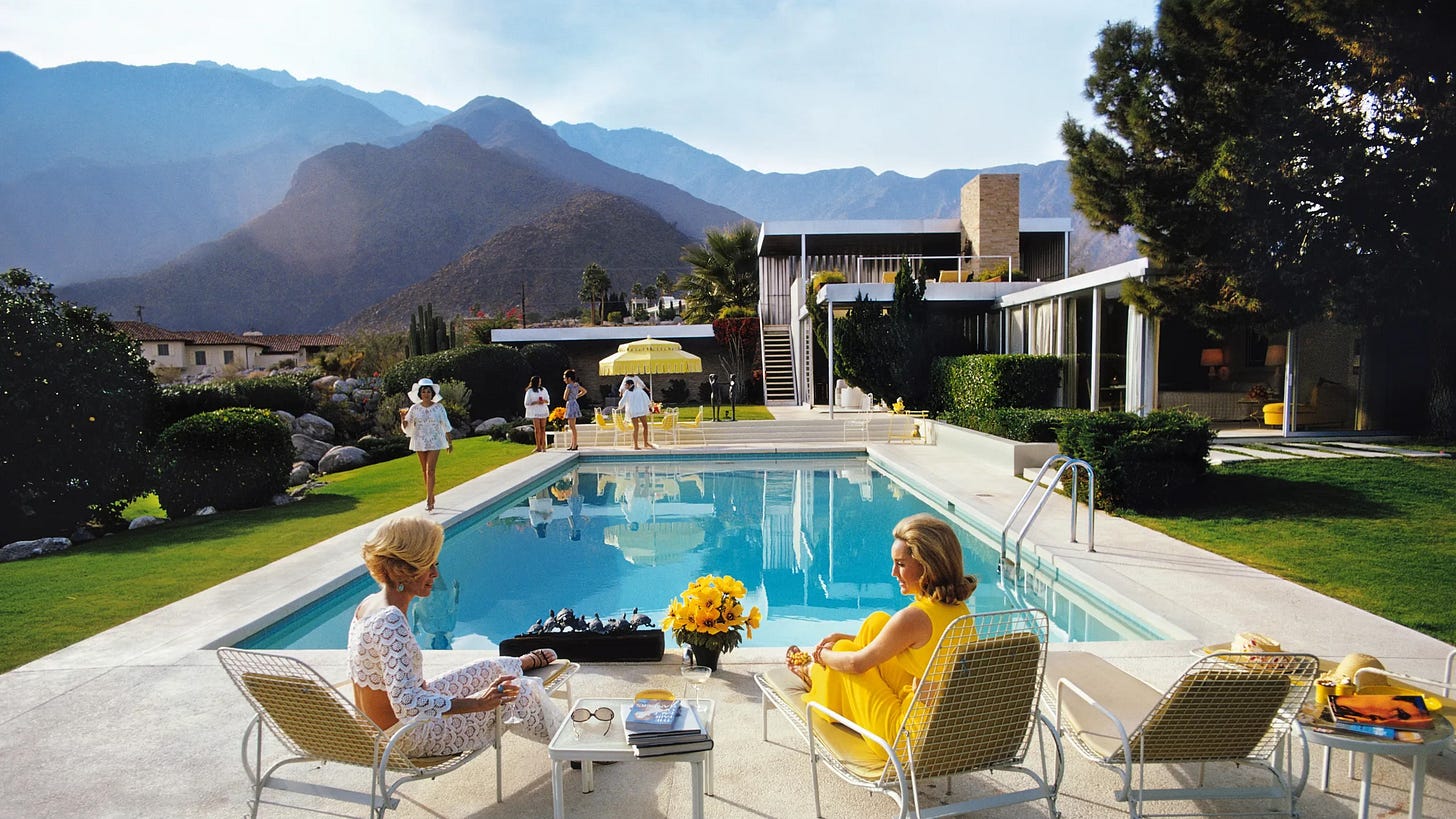Adorable Story #64: Richard Neutra & the Kaufmann Desert House
This week we fly to Palm Springs to learn about one of America’s most iconic houses
“I prefer to think of architecture as a production of a biological environment fit for human beings.”
— Richard Neutra

The Kaufmann Desert House, designed by Richard Neutra in 1946, stands as a paramount example of modernist architecture in the United States, particularly within the context of mid-century residential design.
By utilizing glass, steel, and stone to harmoniously connect indoor and outdoor spaces, this Palm Springs masterpiece exemplifies Neutra’s design philosophy of “biorealism.”
Its iconic status is further cemented by its influence on subsequent architectural practices and its role in defining the stylistic trajectory of luxury desert living.
If you aren’t subscribed yet, hit the subscribe button below to receive the Adorable Stories every weekend, directly in your inbox:
Richard Neutra
“My life has been governed by the goal of building environmental harmony, functional efficiency, and human enhancement”
— Richard Neutra

Early Life and Education
Richard Joseph Neutra was born on April 8, 1892, in Vienna, Austria, into an affluent Jewish family: his father was Samuel Neutra and his mother was Elizabeth “Betty” Neutra (née Goldschmidt). Samuel Neutra was a landowner and entrepreneur, while his mother, Betty, came from a wealthy Jewish family.
Richard’s early exposure to the arts, encouraged by his father, and his education at the University of Vienna — where he graduated with a degree in architecture in 1917 — laid the foundation for his later career in architecture.
After serving as an officer in the Austro-Hungarian army during World War I, Richard Neutra emigrated to the United States in 1923, a move that marked the beginning of a significant phase in his career.
Settling in Southern California, he worked briefly for landscape architect Rudolf Schindler before establishing his own practice. It was in the US that Neutra’s ideas began to crystallize around modernist architecture, emphasizing a connection between the built environment and its natural surroundings.
Modernist Architecture
“Less is more.”
—Mies van der Rohe
Modernist architecture, also known as International Style, is an architectural movement that emerged in the early 20th century, characterized by (i) minimalism, (ii) a rejection of ornament, and (iii) a focus on functionality.
Keep reading with a 7-day free trial
Subscribe to Adorable Times’ Newsletter to keep reading this post and get 7 days of free access to the full post archives.





